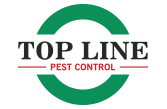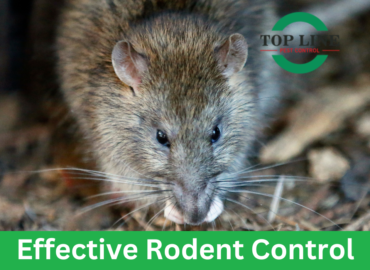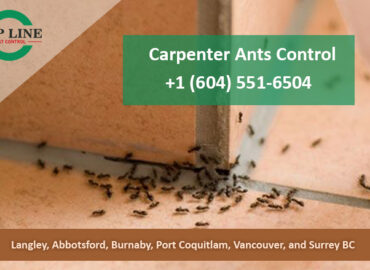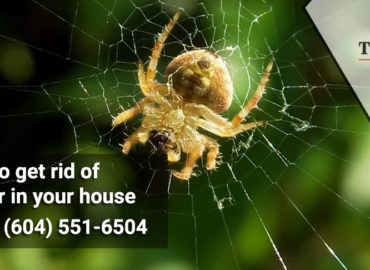Pest control in restaurants is more than just a matter of cleanliness—it’s essential for maintaining your restaurant’s reputation and ensuring the safety of both staff and diners. When pests, like rodents and insects, are allowed to thrive in your establishment, they not only jeopardize the quality of food but also expose your business to legal trouble.
In this guide, we’ll dive deep into why keeping your cuisine critter-free is crucial, the risks of pest infestations, and the most effective strategies to protect your restaurant from pests.
Why Keeping Your Cuisine Critter Free is Essential
Maintaining a pest-free restaurant is crucial for several reasons. Pests, including rodents, flies, and other insects, can quickly become a nuisance, causing significant damage to both property and food safety. They contaminate food, spread diseases, and damage restaurant infrastructure. These pests not only harm the customer experience but can also tarnish your reputation, resulting in fines or even restaurant closure.
Restaurant owners are required by law to follow specific hygiene standards. If pests are found during inspections, or worse, reported by customers, the restaurant could face penalties, lose customers, or even have to shut down temporarily. Therefore, keeping your cuisine critter-free is necessary to protect your business.
The Risks of Pest Infestations in Restaurants
Pests carry serious risks, both in terms of health and property damage:
- Health Hazards: Rodents, flies, and other pests can contaminate food, spreading harmful bacteria and diseases like Salmonella and E. coli.
- Damage to Property: Rodents can chew through electrical wires, plumbing, and other structures, leading to costly repairs.
- Legal Trouble: A pest infestation can lead to inspections, fines, and in some cases, a shutdown order from health authorities.
- Reputation Damage: Customers encountering pests or hearing about infestations will likely spread the word, damaging your restaurant’s reputation.
Legal Requirements for Restaurant Pest Control
Restaurant owners must comply with local and national regulations to ensure their business is safe and pest-free. Health departments enforce strict pest control standards, and any violations can result in fines, forced closures, or even lawsuits. Regular pest inspections are necessary to ensure compliance and avoid penalties.
Proven Strategies for Keeping Your Cuisine Critter-Free
To effectively manage pests, restaurant owners must implement a combination of proactive strategies. These can be handled in-house or with the help of professional pest control services. Here are the best strategies for keeping your restaurant pest-free:
1. Routine Monitoring and Inspections
Regular monitoring and inspections are the first line of defense against pests. Conduct frequent checks of the restaurant, especially in hidden areas like storage rooms, kitchen corners, and behind appliances. Use traps and visual inspections to catch pests early, before they can spread or cause serious damage.
2. Strict Hygiene Practices and Cleaning
Maintaining high levels of hygiene is one of the most effective ways to keep pests at bay. Cleanliness in the kitchen, dining area, and waste disposal zones should be a priority. This includes:
- Regularly cleaning surfaces, floors, and hard-to-reach places.
- Properly storing food to prevent contamination.
- Ensuring all waste is disposed of in sealed, pest-proof containers.
3. Sealing Entry Points
Pests can enter through even the smallest cracks or gaps. Seal all potential entry points, including around windows, doors, vents, and pipes. Ensure that window screens are intact and doors close tightly to prevent pests from finding their way in.
4. Utilizing Integrated Pest Management (IPM)
Integrated Pest Management (IPM) is a holistic approach to pest control that focuses on prevention while minimizing the use of chemicals. Key components of IPM include:
- Monitoring and Inspection: Regular checks for pest activity.
- Habit Modification: Remove food and water sources and eliminate clutter to remove hiding spots.
- Biological Control: Introduce natural predators, like certain insects or bacteria, to control pests without relying on chemicals.
- Cultural Control: Modify the environment to disrupt pests’ life cycles and reproduction.
- Mechanical Control: Use traps, barriers, or physical methods to remove pests.
5. Hiring Professional Pest Control Services
For larger infestations or if pest problems persist, hiring a professional pest control service is essential. These experts have the experience and tools to properly assess and treat pest issues while ensuring compliance with local regulations.
Conclusion
In conclusion, keeping your cuisine critter-free is not just about maintaining a clean restaurant—it’s about safeguarding your reputation, protecting the health and safety of your customers, and ensuring compliance with health and safety standards. By implementing effective pest control strategies, restaurant owners can prevent infestations, protect their business, and create a safe, clean dining experience.
Key Takeaways:
- Regular inspections and cleanliness are essential for preventing pests.
- Seal all possible entry points to keep pests from entering your restaurant.
- Integrated Pest Management (IPM) is a sustainable approach to controlling pests.
- When in doubt, hire professional pest control services to handle large infestations.
By following these strategies, restaurant owners can ensure their establishment remains pest-free, maintaining both customer satisfaction and legal compliance. cal component of maintaining cleanliness, safety, and compliance. By staying vigilant, adhering to regulations, and implementing effective strategies, restaurants can protect their business and reputation from the pervasive threat of pests.




